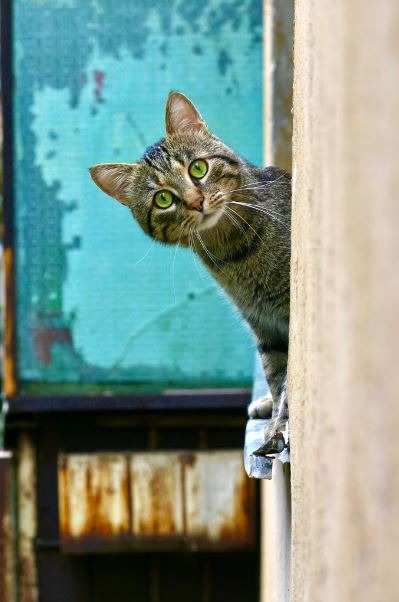A tracking system also referred to as a locating system, is used to monitor individuals, animals, or objects in motion and provide an organized sequence of location data promptly for processing. Pet trackers offer location positioning so that, if your pet has been gone for an extended period and you are worried, you can see where they have been going and where they might be hiding if they are far from home. Some gadgets have QR codes that can show the owner of the animal found by a stranger’s contact information. Other types of trackers can even assist in bringing pets back home by using the device’s lighting or beeping or by playing back recorded voice commands from the owner.
What are Microchips for Cat?
An electronic chip the size of a rice grain that is implanted under your cat’s skin serves as an identification tool known as a microchip for cats. If your cat gets lost, the distinctive chip contains an ID number that can be used to locate the cat’s owner. Your cat’s shoulder blades are carefully injected with the chip, and the quick and painless procedure takes only a few seconds.
Once implanted, the chip functions if your cat goes missing and is taken to a vet or shelter. There, they will be able to scan the microchip to locate you, the cat’s owner, and hopefully get in touch with you. The database must have your current contact information for the microchip to be successful in reuniting you with your cat.
Benefits of A Pet Tracker
1. Safe Outdoor Exploring
Our pets want to be outside, unrestrained, and to run and explore. Many pet owners want the freedom to open the door and let their dog or cat wander around the backyard or neighborhood without having to keep an eye on them constantly or try to confine them to a specific area. The best Pet trackers can offer peace of mind instead of the need to spend money on a fence or experience anxiety when pets are left outside by themselves. Many pet trackers allow you to set up a geofence around a designated safe area, such as your backyard or neighborhood, and you can notify the owner when the pet leaves that area. Some pet wearables also employ tones and vibrations to train the dog on geofenced areas so they can learn where not to go and generally behave better.
2. Find Out More About Your Pet
Pet trackers allow owners to see inside the movements and activities of their animals. The wearable’s location technology can reveal a dog’s potential route through the neighborhood or reveal that your cat hangs out at the same bird feeder every day. Some pet trackers also offer more detailed information about fitness and activity levels, assisting owners in maintaining the health and happiness of their furry friends. These trackers can display distances traveled, changes in activity levels from resting to high-activity, and some even check the temperature so your dog won’t get too hot in the car.
3. Find Your Pet When They Get Missing
Finding a lost pet is the most obvious and significant benefit of a pet tracker. Pet trackers offer location positioning so that, if your pet has been gone for an extended period and you are worried, you can see where they have been going and where they might be hiding if they are far from home. Some gadgets have QE codes that can show the owner of the animal found by a stranger’s contact information. Other types of trackers can even assist in bringing pets back home by using the device’s lighting or beeping or by playing back recorded voice commands from the owner.
Why Use A Cat Tracker?
1. Peace Of Mind For The Owner
Probably the most important justification for getting a cat tracker. We are all aware of how curious our pets are. It’s also uncommon for cat owners to never have to go out looking for their missing cat because they’ve been gone for longer than usual. You won’t have to be concerned about your cat going missing and never being found again thanks to a cat locating device that is permanently attached to their collar. So it is important to invest for best pet tracker for cats.
2. Cats Like To Roam
Cats are unlikely to wander thousands of miles from home. They do, however, enjoy roaming around in their “own territory.” Most people wouldn’t be able to simply find their cat by walking around themselves because there is a sizable area to cover. Therefore, when you start looking for your pet, having a good idea of where you should be going will save you a lot of time and stress. Of course, distance isn’t the only problem.
3. Obstacles In The Way
If you’re out looking for your cat, there will almost certainly be several physical barriers and obstacles to get over. These will consist of things like brick walls, hedges, and home fences. These obstacles can quickly become confusing if you are unsure of where your cat is located. Therefore, you might end up going in a different direction than the one you had in mind. This makes looking for your cat over a large area of ground even harder. You can avoid getting off course and find your cat as quickly as possible by using a tracking device to determine their exact location. It’s not just about finding your cat, of course. One of the most terrifying ideas for any pet owner is the idea of their cherished family member becoming trapped in strange circumstances.
4. Cats Can Be Trapped
Your cat could begin exploring several locations, getting stuck in one and unable to escape. Several instances are:
- Outbuildings, garages, and sheds, where your cat could accidentally enter an open door or window and become stuck there afterward. Or, once they pass through, the gap may close behind them.
- Office and factory buildings, where your cat might be able to enter but be unable to exit.
- Holes in the ground, such as rabbit holes or holes dug by other animals, where your cat is trapped underground and finds it increasingly difficult to turn around.
- Trees are a common theme in comic books, but it is a simple fact that cats can get tangled in a tree’s branches. Cats are incredibly adept at scaling walls, but they struggle to do so when trying to descend.
- Cats are also attracted to the homes of other people. Even though this might not necessarily mean they are “trapped,” you will want to know if your cat starts making friends with neighbors.


